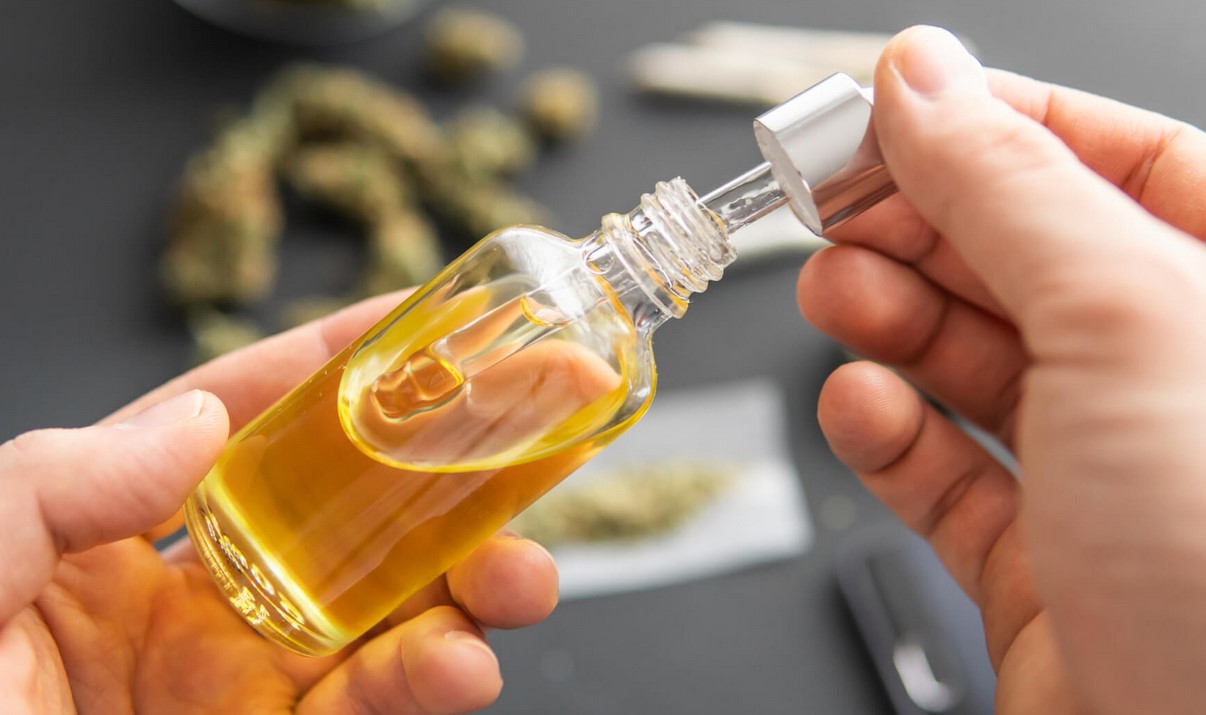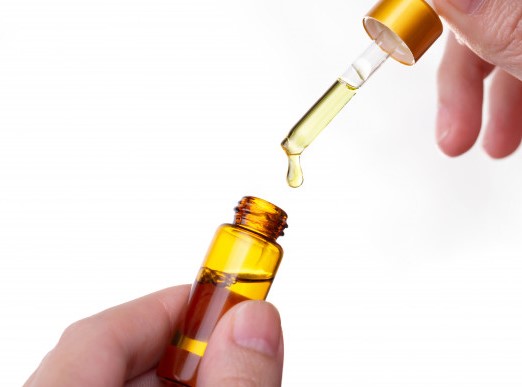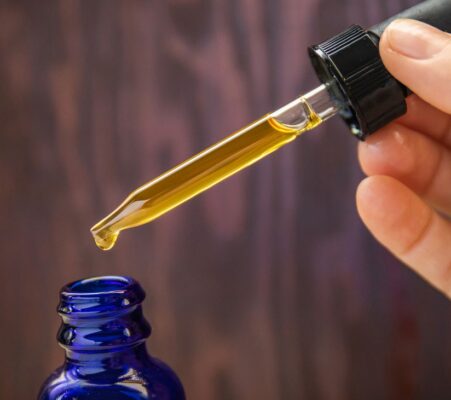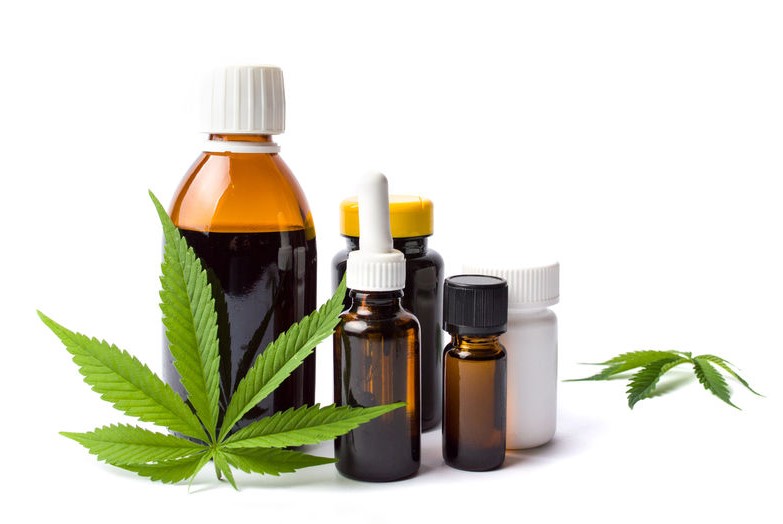Non classé
Liquid THC Guide
To be clear, we DO NOT recommend that you produce liquid THC at home unless you are a trained expert in a fully equipped area and we are not responsible for any damage or harm caused. All activities carry the inherent danger of bodily injury or property loss.
Humans will never be completely satisfied, which is one of our species’ flaws. People were smoking marijuana in the 1960s and 1970s that probably contained around 5-10% THC. Nowadays, this quantity is thought to be meaningless for a regular user.
Over the years, marijuana strains have been intensively developed to include increasingly high levels of THC, with many of the most popular choices available in dispensaries having more than 30% THC.
So, guess what? This isn’t enough yet. More and more people have been abandoning their dry cannabis flower and traditional joints and bowls for a far more potent “hi-tech” marijuana experience in recent years.
Of course, we’re talking about getting high from drinking liquid THC.
THC, on the other hand, is short for tetrahydrocannabinol. It’s a form of cannabis that has been extracted from buds and refined into an oral tincture or vape juice that can be inhaled at low temperatures via a vape pen, mod box, or any other sort of concentrate vaping device.
While THC concentrations of over 90% are not uncommon, the quality and methods employed during the infusion process can significantly affect the final product.
In this post, we cover everything you need to know about liquid THC for vaping or oral consumption, from how it’s manufactured to where you can buy it and how to use it without going into a panic attack.

What Is Liquid THC… and Is It Different from a Cannabis Tincture?
The most potent type of marijuana is ultra-high THC. While typical marijuana strains have a THC concentration of 12 to 35 percent, the majority of “ordinary” varieties of liquid cannabis have more than 70% THC content – enough to put you higher than you’ve ever been in your life.
In most cases, the terms “cannabis extract” and “liquid THC” are used interchangeably. Although cannabis oil and liquid THC are both referred to as “cannabis tincture,” they aren’t the same thing. In a general sense, all liquid THC is technically considered cannabis oil, but not all cannabis oil is liquid THC. If that’s how you see it.
In reality, cannabis oils, tinctures, or other cannabis products might include high-THC oils, sublingual medicinal oils, CBD oils, and so on. The term “tincture” just refers to an oil-based liquid infused with natural botanical components.
It is possible to make liquid THC in a variety of ways, some safer and more “appropriate” than others. In the following section, we’ll highlight a few of the most common methods for producing liquid THC and identify a few key things that you should avoid if you want your own mixture to turn out right.
How to Make Liquid THC
We’ll go through three of the most popular methods for converting dry marijuana plant matter into liquid THC below. We DO NOT encourage you to try any of these ideas, and we are not liable if you break any laws or cause damage or injury to people or property as a result of your liquid pot-making attempt. This should only be attempted by skilled professionals.
Keep in mind and comprehend the marijuana laws of your state, and only acquire liquid cannabis from a legitimate, licensed dispensary.
Liquid THC: Make It at Room Temperature

Simply put, all you have to do is obtain some marijuana (preferably nuggets without stems or seeds), chop it into tiny pieces, and let it soak in an alcohol bath for a few weeks. “A few weeks” can range from a single week to three months depending on the quality and potency you want.
To begin, allow your chopped cannabis to dry for 20 minutes on a cookie sheet in the oven at 200°F/95°C (or less). This decarboxylates the THCA into THC, allowing you to get high.
Fill a mason jar halfway with alcohol, then add the chopped up, decarboxylated cannabis to it. Then screw on the lid and leave it alone for several days to a few weeks. The natural chemical qualities will remove all of the THC from the flower, resulting in a concentrated, highly potent liquid.
Some Things to Remember:
Don’t just pick any kind of alcohol. Isopropyl (rubbing) alcohol, for example, has toxic chemicals in comparison to pure ethanol. The majority of individuals who produce liquid THC use food-grade vegetable glycerin, propylene glycol (PG), polyethylene glycol (i.e. PEG-400), or pure ethanol. You may even utilize 190-proof Everclear, a 95% grain alcohol, as long as it’s mixed with something else.
After you’ve removed the THC from the herbe, souche and purify the solution. This eliminates any extra plant material or alcohol residue, leaving only the active THC. There are a few different methods for purging liquid THC, but none of them are completely reliable (unless you’re an expert chemist with access to sophisticated equipment).
You may vaporize your liquid THC, use a dropper bottle to dispense drops under your tongue, or even cook with it and produce edibles. However you utilize it, be aware that liquid marijuana is considerably more powerful than “traditional” cannabis smoking. In recent years, there have been a lot of paranoia-fueled emergency-room visits as a result.
Finally, it’s worth noting that both PG and PEG breakdown into formaldehyde (a carcinogenic substance) when heated above 390°F. This is a crucial consideration to bear in mind if you’re going to vape THC liquid, since we wouldn’t want to breathe potentially cancer-causing aldehydes.
Make Liquid THC by Freezing
You may actually accelerate the procedure for extracting liquid THC by simply freezing it instead of leaving it at room temperature.
After you decarboxylate the marijuana, place it in a Ziploc bag and freeze it for around three hours. (Freeze your alcohol in the same amount of time.) After that, combine four ounces of alcohol with every tenth ounce of cannabis, seal the mixture tight inside a mason jar, and shake it about vigorously for approximately three to four minutes. This will help saturate the flower and begin the reaction.
Take the mason jar out of the freezer after combining the alcohol and marijuana. Place it back in the freezer for about 48 hours before shaking it vigorously every several hours.
Remove the mason jar from the freezer after 48 hours. Filter, strain, and purge it as described above. You’ll be left with a potent THC liquid that you can cook with, put under your tongue, or inhale via a vaporizer (though there are risks; see ahead).
Heating Method: Make Liquid THC
If you’re wondering how to produce liquid THC, the fastest method is to extract the chemical while it’s being heated. The process is rather simple: soak your dried plant material in an alcohol solution (as described above) and speed up the extraction by boiling it in an oil bath, or use a hair straightener (or specialized plant matter/herbal extractor) to press rosin out of tightly-packed nugs.
To begin, we’ll provide a brief rundown of how to produce THC tincture by heating it in an oil bath:
- Remove smaller pieces of your marijuana plant with a pair of scissors or a knife. A grinder will result in far too fine a powder, so don’t use one.
- Place the plant material into a heat-safe jar with vegetable glycerin (or another type of alcohol). Saturate it with liquid vegetable glycerin (or another form of booze) before sealing the jar. Be careful not to use too much alcohol.
- Place the jar of buds in a larger Pyrex dish with enough water or cooking oil so that it is submerged about 1-2 inches. The purpose of this step is to heat the oil in the bigger pan. Allow the smaller container to rest inside the boiling bath.
- In a large pan, heat the oil until it is simmering at a constant temperature of 220°F/105°C (an accurate cooking thermometer is required).
- Place the jar with the marijuana/alcohol solution in the oil bath. Try to maintain a temperature of 180°F/80°C using a separate thermometer while maintaining it.
- Allow the cannabis jar to boil in the oil bath for around 45 minutes while frequently stirring and monitoring both thermometers.
- After 45 minutes, remove the jar from the oil bath and let it sit for about 10 minutes before straining all of the plant material out.
- Set aside your filtered liquid THC. Then, using the same buds, repeat steps 2-7 two additional times to get the most THC possible out of them.
- After extraction, transfer the filtered, refined THC liquid to a clean glass jar on its own. For about 30 minutes in another oil bath at 220°F/105°C, boil it for decarboxylation. The larger the better! It’s best to use a spoon that can hold at least two ounces. (Repeat with both thermometers to keep track of your temperature. Please be advised to raise the oil in the “outer” pan above 220°F in order for the liquid THC in the “inner” jar to remain constant at 220°F.)
In order to make extremely powerful liquid THC, simply place rosin-packed medium-sized, densely packed marijuana buds on wax parchment paper and press with a hair straightener. It’s actually rather difficult to do than it appears, but the basic idea is to sandwichen a nice solid nug between two pieces of wax parchment paper. Then, squeeze it as tightly as you can between the blades of your hair straightener.
You can produce about 0.5 g of ultra-potent THC rosin from roughly an eighth of dry flower every time if your technique is good – perhaps even more if you’re a DIY rosin-pressing pro. nRegardless, after you’ve extracted the THC using this method, you’ll need to add some sort of terpene solution in order to turn the gooey, sticky mess into workable liquid marijuana that you may vape or administer sublingually.
Precautions to Take When Making Liquid Marijuana
Although there are several methods for extracting THC oil, the most dangerous is putting it in an open container. While some of these processes may be utilized to create THC oil safely, we do not recommend that you attempt them at home. Instead, invest in a bottle from a trustworthy, licensed dealer.
One of the most serious hazards of producing liquid THC is butane gas accumulation. This can cause significant explosions. We didn’t discuss how to make liquid THC using butane in this post, however it’s a popular technique among DIYers.
Essentially, what people do is put butane (lighter fluid) over a large amount of plant material packed tightly into metal tubes. The butane passes over the plant material and extracts the THC, which seeps out the bottom in the form of a sticky, gooey liquid THC.
The hazard is that, without enough ventilation, butane fumes can build up in high volume as they sink to the ground (butane gas is considerably heavier than ordinary air). This big quantity of vapor might cause an explosion. Triggered by something as little as a water heater pilot flame or a tossed cigarette butt.
Whatever kind of personal decisions you make regarding how to produce liquid THC, do it at your own risk and we strongly advise against producing liquid cannabis.
How to Store Liquid Marijuana

Keep your liquid THC in a dark glass vial or dropper bottle for storage. Then, store it in a dark, temperature-controlled location away from direct sunlight. This will help it stay active for over a year if stored correctly. It’s also not a bad idea to keep it in the refrigerator since doing so will increase shelf life considerably.
What Does Liquid THC Look Like?
Realistically, there are dozens of different variables that might influence the look of a high-quality liquid THC tincture. The viscosity and appearance of liquid THC varies depending on the strain chosen, the type of alcohol used, the temperature during extraction, and other factors. There may be a variety of cannabinoids in each tincture.
In general, though, a good quality liquid THC will be somewhat opaque or hazy. This implies that light will not be able to pass through it. Following that, it will range in color from a pale limey green to an extremely dark tarry almost black goo. The greatest THC oil is generally golden brown in hue.
Whatever the situation, your liquid cannabis should not be transparent. There also shouldn’t be any obvious flakes, plant material, or anything else floating in it.
How Do You Use Liquid THC?
What is the safest (in terms of general health) method for ingesting liquid THC? Under the tongue is the preferred mode of administration. This region of the mouth contains a lot of glands and capillaries ( tiny blood vessels). You’re essentially giving yourself a direct injection of THC into your circulation. Place only one drop or two beneath the tongue and hold for about 60-90 seconds before swallowing if you administer below the lip.
You may also smoke liquid THC using a vape pen, e-cigarette device, or some other type of portable vaporizer. Keep in mind that if the liquid marijuana contains any amount of propylene glycol (PG) or polyethylene glycol (PEG), you run the danger of inhaling formaldehyde if the vape burns the liquid at a temperature much above 200°C. You are proceeding at your own risk.
Last but not least, many individuals like to bake with liquid THC to create extremely powerful edibles. You can make “traditional” foods such as cookies or pot brownies using the liquid mixture. Alternatively, you may use the liquid mixture to flavor other cooking oils and prepare a variety of meals. However, be cautious while calculating dosages carefully.
What Are the Effects of Liquid THC?
However, if you choose to use liquid THC, keep in mind that the effects are stronger than those of regular marijuana smoking. You’re likely looking at a concentrate with a THC level between 50 and 90 percent. This is dependent on the plant material you utilized and the effectiveness of your extraction procedure, however. Many novices have been admitted to hospitals after eating too much THC content or drinking too much liquid marijuana.
Cannabis is a relatively non-toxic plant. There have been no reported cannabis overdoses using liquid THC, although it can induce strong psychedelic experiences and marijuana “trips.” These might be unpleasant and/or unpredicted.
Is Liquid THC Dangerous?
We are not aware of any deaths caused by a liquid THC overdose, as we previously stated. We would not consider it a “safe” method to consume cannabis. Nonetheless, it does not have the same inherent dangers as other substances like opioid painkillers and so on.
However, whether you choose to use liquid THC is your own choice. Also, start with a tiny dose.
If you’re new to using a high-THC marijuana concentrate, this is especially crucial. The effects of a “traditional” marijuana high are considerably different than those produced by a THC cannabis extract.
Final Thoughts
THC in the form of liquid cannabis is a novel approach to cram as much THC as feasible into one consumable product. We are not big supporters of extremely potent THC concentrates, to be honest; we’ve never understood why people would want to leave good marijuana flower, which was presumably created for high potency.
In our opinion, the main advantages of liquid THC and ultra high-potency marijuana oil are to assist people with chronic, intractable forms of pain or nausea who are in need of relief. Liquid THC may provide great therapeutic benefit for these purposes.
Regardless, many people will continue to use liquid THC for recreational purposes. This is due to the fact that it produces a far more powerful high than traditional marijuana smoking. Make (and/or utilize) liquid THC responsibly, however, no matter how you choose to do it. Every step of the way, be cautious.


